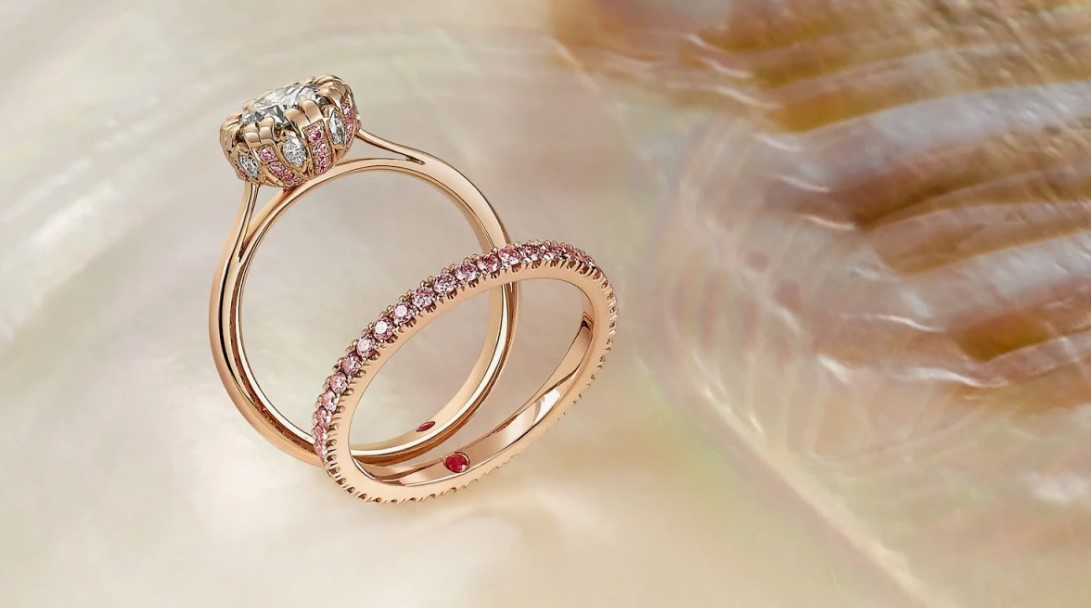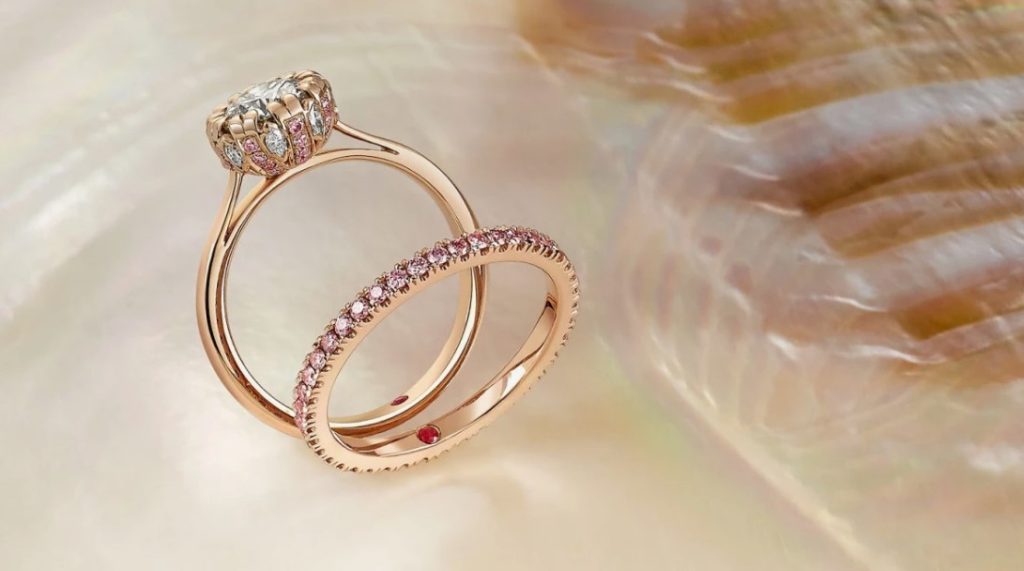old has always symbolized wealth, elegance, and timeless beauty. In fine jewelry, the choice of gold karatage can significantly impact the piece’s appearance, durability, and value. Among the various options, Varudai prefers 18K gold for high-end jewelry. This article delves into the properties of 18K gold, exploring its durability, color, hypoallergenic properties, and why it is favored in luxury markets.
Composition and Purity
18K gold, also known as 18 karat gold, contains 75% pure gold and 25% alloy metals, such as silver, copper, and zinc. This composition balances pure gold’s softness (24K) and the durability required for everyday wear. The higher gold content compared to 14K and 10K gold results in a richer color and a higher intrinsic value.
Pure Gold Content: 18K gold contains 18 parts out of 24, making it 75% pure.
Alloy Metals: The remaining 25% consists of other metals that enhance durability and alter the color.
Durability
Gold’s purest form (24K) is soft and prone to scratching and bending. Alloying gold with other metals in 18K gold enhances its hardness, making it more durable while retaining the luxurious feel of high-purity gold. This balance makes 18K gold ideal for jewelry that needs to withstand daily wear and tear.
Hardness: 18K gold is more resistant to scratches and dents than higher karat gold.
Longevity: Pieces crafted from 18K gold maintain shape and appearance over time.

Color Options
One of the appealing aspects of 18K gold is its versatility in color. By varying the alloy metals, 18K gold can be produced in different hues, each offering a unique aesthetic.
Yellow Gold: The classic and timeless color of gold, achieved by mixing pure gold with silver and copper. It has a warm, rich luster synonymous with traditional gold jewelry.
White Gold: Created by alloying gold with metals like palladium or nickel and often plated with rhodium to enhance its white sheen. White gold offers a modern and sleek look, making it a popular choice for engagement rings and contemporary designs.
Rose Gold: Adding more copper to the alloy achieves this romantic and unique color. Its distinctive pink hue appeals to those looking for something different yet elegant.
Hypoallergenic Properties
18K gold is generally considered hypoallergenic, especially when alloyed with metals like palladium rather than nickel. This makes it suitable for individuals with sensitive skin who may react to lower-karat gold that contains higher percentages of nickel or other reactive metals.
Allergy Prevention: Lower risk of causing skin irritation or allergic reactions.
Suitable for Sensitive Skin: Ideal for earrings and other jewelry in close contact with the skin.
Value and Investment
The higher gold content in 18K gold translates to a higher intrinsic value than lower karat gold. This makes 18K gold a desirable material for fine jewelry and a worthwhile investment.
Intrinsic Value: Higher due to the greater amount of pure gold.
Long-Term Investment: Retains value over time and can be passed down as an heirloom.

Aesthetic Appeal
The rich luster and luxurious appearance of 18K gold make it a preferred choice for high-end jewelry. Its radiant shine and depth of color are unparalleled, contributing to its popularity among discerning buyers.
Rich Luster: Offers a deep, glowing shine that enhances the beauty of the jewelry piece.
Luxurious Look: Preferred for engagement rings, wedding bands, and designer collections.
Versatility in Design
18K gold’s balance of purity and durability makes it ideal for crafting intricate and detailed jewelry designs. It is malleable enough to be shaped into elaborate patterns while maintaining structural integrity.
Intricate Designs: Suitable for detailed and complex jewelry pieces.
Gemstone Setting: Strong enough to securely hold precious gemstones.
Symbolism and Tradition
Gold has long been associated with wealth, success, and longevity. 18K gold, with its higher gold content, often holds significant symbolic value in various cultures and traditions.
Cultural Significance: Used in traditional and cultural jewelry pieces.
Symbol of Prosperity: Represents wealth and success in many cultures.
Maintenance and Care
While 18K gold is durable, it does require occasional maintenance to preserve its shine and luster. White gold, in particular, may need periodic rhodium plating to maintain its color.
Cleaning: Regular cleaning helps maintain the brilliance of 18K gold jewelry.
Rhodium Plating: White gold may need re-plating to retain its bright white finish.
Popularity in Luxury Markets
18K gold is favored by luxury brands and high-end designers for its premium quality and aesthetic appeal. It is commonly used in luxury watches, fine jewelry, and bespoke pieces.
Luxury Brands: Top jewelry brands often choose these for their collections.
High-End Jewelry: Used in exclusive and custom-made pieces.
By understanding the unique properties and benefits of 18K gold, it becomes clear why it remains a preferred choice for fine jewelry. Its perfect blend of purity, durability, and aesthetic appeal makes it an ideal material for creating treasured pieces that can be enjoyed for generations. Whether for an engagement ring, a timeless necklace, or a pair of elegant earrings, 18K gold offers a lasting investment in beauty and quality.

Biker, vegan, ukulelist, Vignelli fan and fullstack designer. Producing at the crossroads of aesthetics and programing to give life to your brand. I prefer clear logic to decoration. Tropical swift lover. I want to show people that IQOS is a revolution in the world of smoking.

